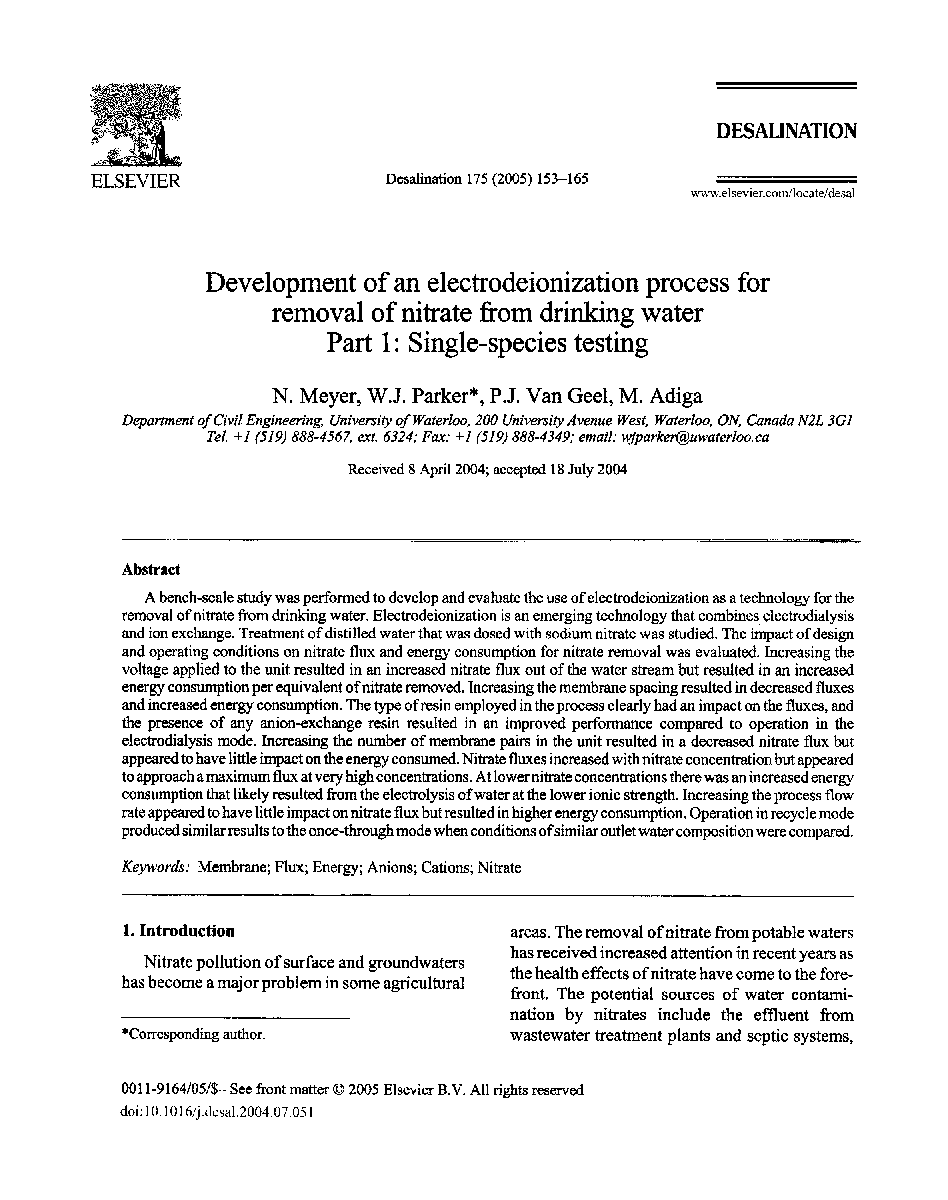| Article ID | Journal | Published Year | Pages | File Type |
|---|---|---|---|---|
| 10386246 | Desalination | 2005 | 13 Pages |
Abstract
A bench-scale study was performed to develop and evaluate the use of electrodeionization as a technology for the removal of nitrate from drinking water. Electrodeionization is an emerging technology that combines electrodialysis and ion exchange. Treatment of distilled water that was dosed with sodium nitrate was studied. The impact of design and operating conditions on nitrate flux and energy consumption for nitrate removal was evaluated. Increasing the voltage applied to the unit resulted in an increased nitrate flux out of the water stream but resulted in an increased energy consumption per equivalent of nitrate removed. Increasing the membrane spacing resulted in decreased fluxes and increased energy consumption. The type of resin employed in the process clearly had an impact on the fluxes, and the presence of any anion-exchange resin resulted in an improved performance compared to operation in the electrodialysis mode. Increasing the number of membrane pairs in the unit resulted in a decreased nitrate flux but appeared to have little impact on the energy consumed. Nitrate fluxes increased with nitrate concentration but appeared to approach a maximum flux at very high concentrations. At lower nitrate concentrations there was an increased energy consumption that likely resulted from the electrolysis of water at the lower ionic strength. Increasing the process flow rate appeared to have little impact on nitrate flux but resulted in higher energy consumption. Operation in recycle mode produced similar results to the once-through mode when conditions of similar outlet water composition were compared.
Related Topics
Physical Sciences and Engineering
Chemical Engineering
Filtration and Separation
Authors
N. Meyer, W.J. Parker, P.J. Van Geel, M. Adiga,
